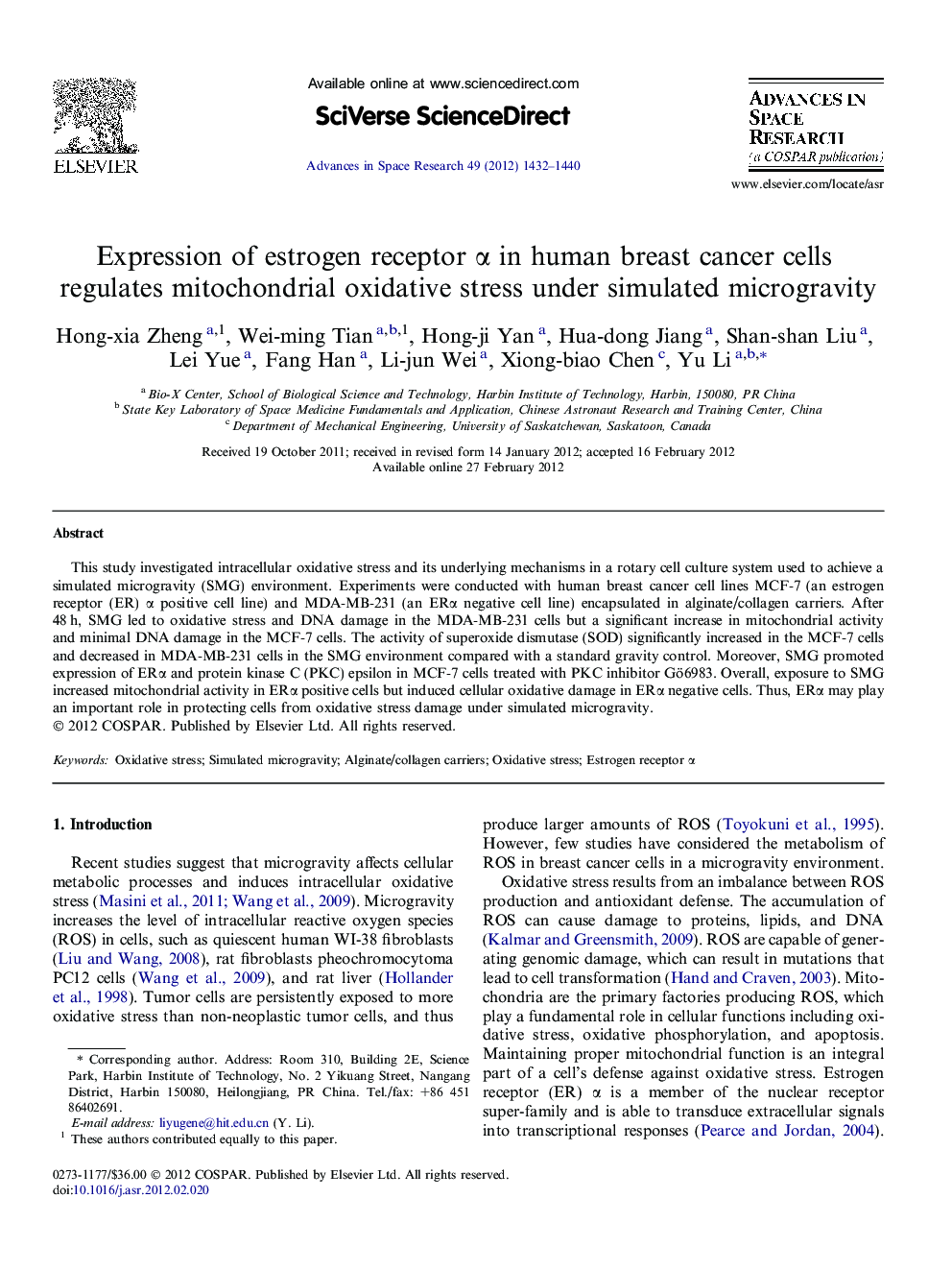| Article ID | Journal | Published Year | Pages | File Type |
|---|---|---|---|---|
| 1766051 | Advances in Space Research | 2012 | 9 Pages |
Abstract
This study investigated intracellular oxidative stress and its underlying mechanisms in a rotary cell culture system used to achieve a simulated microgravity (SMG) environment. Experiments were conducted with human breast cancer cell lines MCF-7 (an estrogen receptor (ER) α positive cell line) and MDA-MB-231 (an ERα negative cell line) encapsulated in alginate/collagen carriers. After 48 h, SMG led to oxidative stress and DNA damage in the MDA-MB-231 cells but a significant increase in mitochondrial activity and minimal DNA damage in the MCF-7 cells. The activity of superoxide dismutase (SOD) significantly increased in the MCF-7 cells and decreased in MDA-MB-231 cells in the SMG environment compared with a standard gravity control. Moreover, SMG promoted expression of ERα and protein kinase C (PKC) epsilon in MCF-7 cells treated with PKC inhibitor Gö6983. Overall, exposure to SMG increased mitochondrial activity in ERα positive cells but induced cellular oxidative damage in ERα negative cells. Thus, ERα may play an important role in protecting cells from oxidative stress damage under simulated microgravity.
Related Topics
Physical Sciences and Engineering
Earth and Planetary Sciences
Space and Planetary Science
Authors
Hong-xia Zheng, Wei-ming Tian, Hong-ji Yan, Hua-dong Jiang, Shan-shan Liu, Lei Yue, Fang Han, Li-jun Wei, Xiong-biao Chen, Yu Li,
